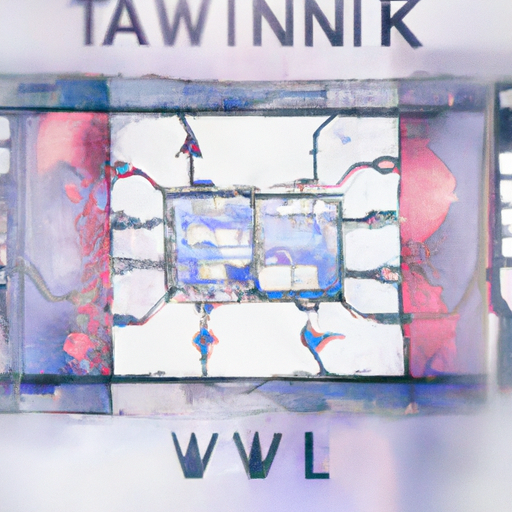In the vast expanse of scientific exploration, we often find ourselves marvelling at the logical chain of events that unfold through diligent study and meticulous scrutiny. One such fascinating field is the interplay of artificial intelligence (AI) and machine learning (ML), where the concept of chain-of-thought (COT) is revolutionizing the way we understand and interact with these technologies. Just as a jeweller fine-tunes a diamond to reveal its true brilliance, applying COT to fine-tune AI and ML systems can unlock unprecedented potential and capabilities.
In this article, we'll embark on an intellectual journey, unveiling the power of COT in shaping and fine-tuning AI and ML. We'll delve into the world of 'Digital Twins,' technological pioneers who are weaving the fabric of scientific intelligence with the threads of chain-of-thought. Lastly, we'll explore the profound impact of fine-tuning and COT, as they jointly sculpt the future of digital intelligence.
From the intricacies of AI and ML to the transformative potential of digital-twins, each section of this article will unravel the role of COT in the grand scheme of digital intelligence. So, strap in and prepare to immerse yourself in a world where science, thought, and technology converge.
1. "Unveiling the Power of Chain-of-Thought in Fine-Tuning AI and ML"
The power of chain-of-thought (CoT) in fine-tuning AI (Artificial Intelligence) and ML (Machine Learning) systems is an area that is garnering increasing attention within the scientific community. This focus is not without merit. Much like the precise methodologies applied in the sciences, the strategic application of CoT in the AI and ML arena can lead to significant breakthroughs.
Let's consider the concept of 'digital twins', a phenomenon that has revolutionized the way we understand and apply AI and ML. Digital twins, or virtual replicas of physical devices, are powered by AI and ML. But at the heart of these digital twins, there lies the essence of CoT. It is the CoT that drives the decision-making, the learning, and the evolution of these digital entities.
Fine-tuning, in essence, is the process of making minute adjustments to achieve optimal performance. When we apply this to AI and ML, it involves adjusting the algorithms, the data sets, and even the underlying logic to improve efficiency, accuracy, and overall performance.
But how does CoT factor into this fine-tuning process? Think of CoT as
2. "Digital Twins: Pioneers of the Chain-of-Thought in Scientific Intelligence"
Digital Twins, the ground-breaking technology, have become the pioneers of the chain-of-thought (COT) in scientific intelligence. These virtual replicas of physical entities are not merely mirror images, but dynamic models that evolve in real-time, mirroring their real-world counterparts. They are an embodiment of the intricate chain of logical events that science has meticulously studied and scrutinized over time.
In the realm of Artificial Intelligence (AI) and Machine Learning (ML), Digital Twins have emerged as a potent tool for fine-tuning intelligence. They embody a sophisticated intertwining of AI and ML, where the former provides the 'thinking' ability and the latter facilitates the 'learning' aptitude. This cognitive combination gives us the power to replicate, analyze and predict the behavior of systems in a controlled virtual environment.
The application of COT in the development of Digital Twins has revolutionized the way we understand and interpret scientific phenomena. By simulating the logical sequence of events, Digital Twins add a layer of predictability to complex systems. This is where the concept of fine-tuning comes into play. The predictive accuracy of these digital replicas can be fine-tuned based on the
3. "The Impact of Fine-Tuning and COT in Shaping the Future of Digital Intelligence"
The dawn of the digital age has ushered in an era where Chain-Of-Thought (COT) and fine-tuning concepts are playing pivotal roles in shaping the future of digital intelligence. The impact of these transformative factors is far-reaching, influencing everything from Artificial Intelligence (AI) to Machine Learning (ML) and Digital Twins technology.
The potential of COT, a concept highlighting the sequence and connection of ideas, is far from fully explored in the digital intelligence arena. However, if we apply the same dedication that has been used to describe scientific phenomena to articulating COT, we could reshape the way we understand and interact with AI. The ability of AI systems to mimic human thought processes and learn from experiences is a direct application of COT. These systems' ability to understand, learn and apply knowledge is constantly being fine-tuned to ensure greater accuracy and efficiency.
Fine-tuning, a process of making minute adjustments to achieve desired results, also has a profound impact on AI and ML. For instance, a well-tuned AI system can autonomously improve its performance over time by learning from its mistakes and successes. This capacity for self-impro
In this era of rapid technological advancement, the integration of chain-of-thought (COT) in fine-tuning AI and ML has emerged as a game-changer. This powerful and dynamic synergy, as we've explored, is set to revolutionize the realm of scientific intelligence, pushing the envelope of what's possible.
Digital Twins, in particular, stand at the forefront of this revolution, embodying the quintessence of COT in their very design. They are a testament to how the chain-of-thought can be transformed into tangible digital constructs, paving the way for more nuanced and complex applications of AI and ML.
The journey of fine-tuning AI and ML with the chain-of-thought is far from over. With the enormous strides we've made thus far, it's evident that COT's full potential in shaping the future of digital intelligence is yet to be fully unleashed.
In conclusion, the fusion of chain-of-thought and fine-tuning practices promises to open new vistas in the landscape of AI and ML. As we continually refine this process, we are not merely fine-tuning algorithms or digital constructs; we are, in essence, fine-tuning the future of intelligence itself.
